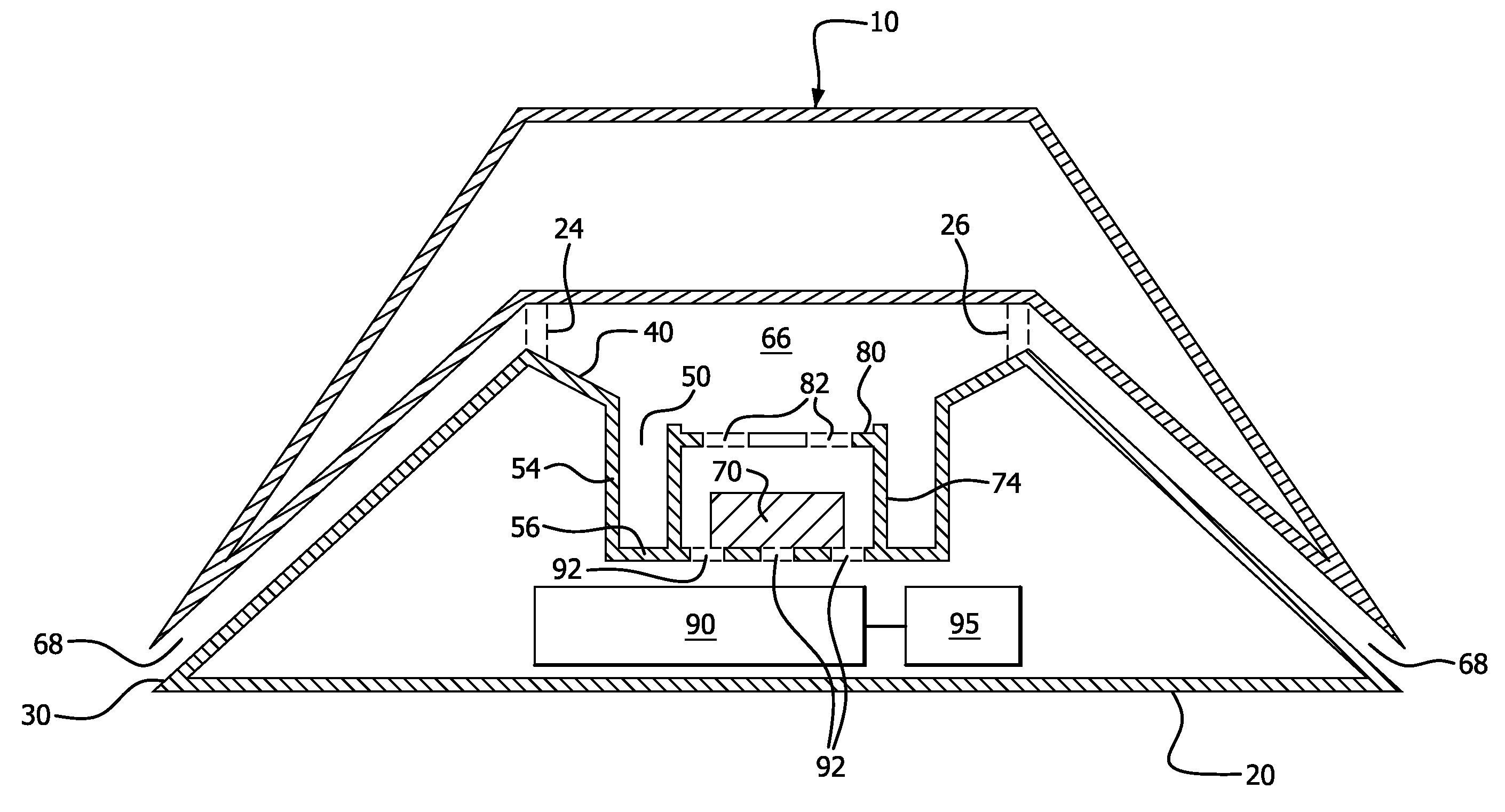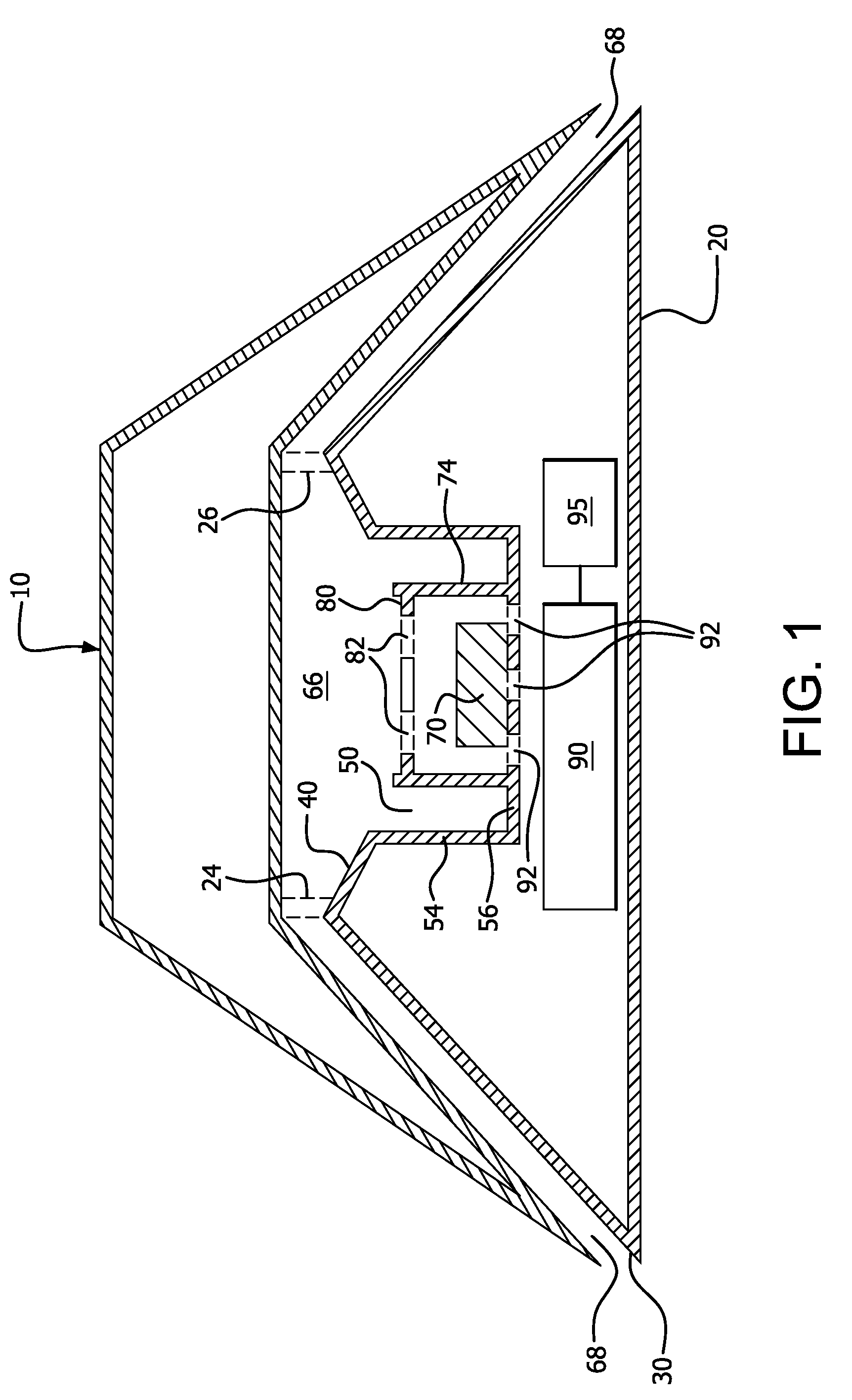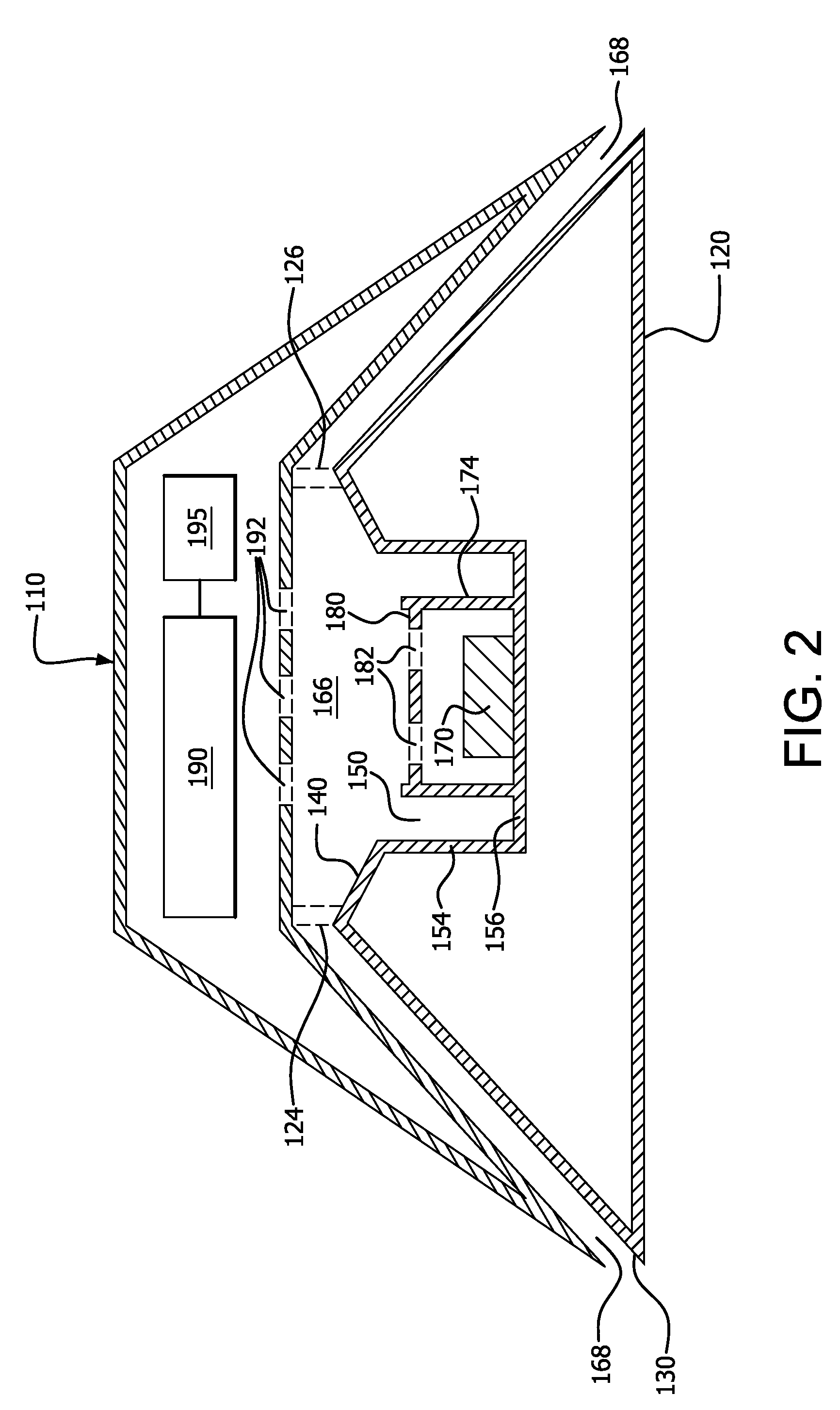Bed bug capturing device
a technology for capturing devices and bed bugs, which is applied in insect catchers and killers, animal hunting, animal husbandry, etc., can solve the problems of difficult to eradicate, difficult to detect and control bed bugs, and long periods of time without feeding
- Summary
- Abstract
- Description
- Claims
- Application Information
AI Technical Summary
Problems solved by technology
Method used
Image
Examples
example 1
[0047]Attraction Assays: Assay arenas were made from 150×15 mm plastic Petri dishes (VWR#25384-326) containing a 125 mm piece off qualitative filter paper (VWR#28320-100) glued to the bottom using 3M Super 77® multipurpose spray adhesive. An 80 mm hole was cut into the lid and a 500 um mesh Nytex® screen (Bioquip, #7293B) was glued to cover the opening using quick epoxy. Fresh bottom dishes were used in each assay. For these experiments 2.4 cm filter paper was folded to create a tent and was treated with either a control solution (10 microliters of silicon oil) or 10 microliters of the experimental chemical diluted in silicon oil. Ten bed bugs per test were used. Day cycling bed bugs (Cimex lectularius), 12 hour light: 12 hour dark (7 AM On: 7 PM Off) light cycle, were incubated and evaluated under normal room lighting conditions at room temperature. Readings were taken at 1 hour intervals from the release of bedbugs for 4 hours. The number of bed bugs under the control filter paper...
example 2
[0049]A test arena was constructed from a 60×40×22 cm (L:W:H) polystyrene container. A 60×40 cm piece of filter paper was glued on the bottom to provide a walking surface for the bedbugs. At one end of the test arena, a triangular piece of plastic (16 cm high×25 cm long) was glued to the middle of the side and bottom of the container to create a partition of equal area on either side of the partition. Deadfall insect trap bases were placed in both the control and the experimental zones.
[0050]The control trap did not contain any lure, while the test trap contained two one hundred micro Liter pipettes. One end of each pipette (Drummond Wiretrol 100 μL) was sealed with parafilm while the other end was left open. The first pipette contained a 300 ppm solution containing Hexenal and Octenal in a 75:25 weight ratio, prepared by dissolving the aldehydes in decane. The second pipette contained a 200 ppm solution of butyric acid in nonane.
[0051]Fifty bed bugs (Cimex lectularius) were entrapp...
example 3
[0052]A test arena was constructed from a 60×40×22 cm (L:W:H) polystyrene container. A 60×40 cm piece of filter paper was glued on the bottom to provide a walking surface for the bedbugs. At one end of the test arena, a triangular piece of plastic (16 cm high×25 cm long) was glued to the middle of the side and bottom of the container to create a partition of equal area on either side of the partition. On each side of this partition a piece of Tygon® tubing was inserted through a hole 7 cm above the bottom of the test arena to deliver a control gas to one side of the partition, being the control zone and test gas to the other side of the partition, being the experimental zone. The tubing was positioned to deliver the gases downward into the test arena with each outlet 6 cm above the uppermost rim of an uncovered deadfall trap.
[0053]Gasses having the composition described below were released in controlled amounts to both the control and the experimental zones of the test arena. To ach...
PUM
 Login to View More
Login to View More Abstract
Description
Claims
Application Information
 Login to View More
Login to View More - R&D
- Intellectual Property
- Life Sciences
- Materials
- Tech Scout
- Unparalleled Data Quality
- Higher Quality Content
- 60% Fewer Hallucinations
Browse by: Latest US Patents, China's latest patents, Technical Efficacy Thesaurus, Application Domain, Technology Topic, Popular Technical Reports.
© 2025 PatSnap. All rights reserved.Legal|Privacy policy|Modern Slavery Act Transparency Statement|Sitemap|About US| Contact US: help@patsnap.com



